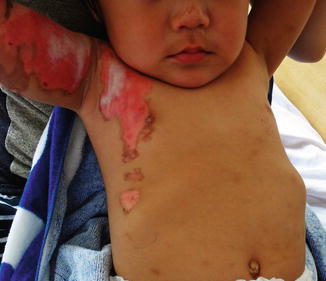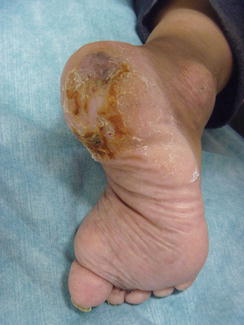1. Fever ≥38.9 °C
2. Rash-diffuse macular erythroderma
3. Desquamation–1–2 weeks after onset of illness, especially of palms and soles
4. Hypotension–systolic blood pressure ≤90 mmHg for adults
5. Multi-system involvement–3 or more of the following:
A. Gastrointestinalvomiting or diarrhea at the onset of illness
B. Muscular–severe myalgia or elevated creatine phosphokinase
C. Mucous members–vaginal, oropharyngeal, conjunctival hyperaemia
D. Renal–blood urea nitrogen or creatinine twice-upper limit of normal
E. Hepatic–total bilirubin twice-upper limit of normal
F. Haematological–platelets ≤100 × 109/L
G. CNS–disorientation or alterations in consciousness without focal neurological signs
6. Negative results on the following tests:
A. Blood, throat, or cerebrospinal fluid culture (blood culture may be positive for S aureus)
B. Rise in title to Rocky Mountain spotted fever, leptospirosis, or measles
Case classification
Probable: case with five of the six clinical findings described
Confirmed: case with all six of the clinical findings described
Non-menstrual TSS may result from any primary staphylococcal infection, or indeed from colonization with a toxin-producing strain of S. aureus (including methicillin-resistant S. aureus [MRSA]). In light of this, TSS should be considered in patients with shock and infection with S. aureus. If present, a focus of infection is more likely to be superficial, may complicate burns or a surgical wound, or may result from a foreign body. Postoperative TSS usually occurs within 48 h of surgery, and in many cases, evidence of clinically significant surgical site infection is lacking at the time of presentation.
15.2.1.1 Skin Manifestation
A variety of skin manifestations are seen in TSS. The initial erythroderma involves both the skin and the mucous membranes and is characterized by a diffuse, red, macular rash resembling sunburn that also involves the palms and soles. In postoperative TSS, the erythema may be more intense around the involved surgical wound site. Late-onset skin manifestations include a pruritic maculopapular rash that may occur 1–2 weeks after the disease onset and desquamation of the palms and soles that characteristically begins 1–3 weeks after illness develops. Since desquamation occurs late, the acute diagnosis of TSS cannot take advantage of this clinical feature.




15.2.2 Streptococcal Toxic Shock Syndrome
Severe invasive group A streptococcus (GAS, e.g., Streptococcus pyogenes) infections are defined as bacteremia, pneumonia, or any other infection associated with the isolation of GAS from a normally sterile body site [2]. Invasive infections also include necrotizing fasciitis and spontaneous gangrenous myositis. GAS TSS is defined as any GAS infection associated with the acute onset of shock and organ failure (Panel 15.2).
Stay updated, free articles. Join our Telegram channel

Full access? Get Clinical Tree








